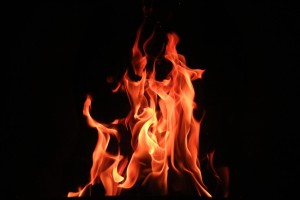When people think about roofing for different properties, most of the focus is generally on providing protection against the weather. The most important factor is ensuring the surfaces can resist the conditions, including wind, ice and snow, sun, and rain. Some attention may also be given to aesthetics. However, fire resistance is often not a factor. This is no longer acceptable; to maximise safety and reduce the risk, it is essential to scrutinise the roof. We want to have a closer look at the topic here. Then, if you want to discuss it with top architects in London, you can speak to us.
A serious problem
 As we said, typically the fire performance of a roof was an after-thought at best. At worst, it wasn’t a consideration at all. But, we’ve seen how big of a role the roofing can play in serious fires like the one at Notre-Dame Cathedral in Paris in 2019. The fact the roofing was oak beams meant the fire could spread very quickly.
As we said, typically the fire performance of a roof was an after-thought at best. At worst, it wasn’t a consideration at all. But, we’ve seen how big of a role the roofing can play in serious fires like the one at Notre-Dame Cathedral in Paris in 2019. The fact the roofing was oak beams meant the fire could spread very quickly.
We now understand that different types of roofing can be a major factor in the spread and severity of fires in various buildings. So, it is important to look more carefully at roof designs, materials, and performance. Even more importantly, it is essential to meet new tighter fire safety regulations.
Testing
The most important thing to remember here is there are legal obligations in the Building Regulations. Now the roof, just like the external walls, must ensure it can resist the spread of fire, both across the surface and to nearby buildings. While there are similarities with the rules for external walls and roofs, you can’t take the same approach to scrutinising the risk. It can help to discuss things with leading architects in London.
When you look at the first resistance of different construction materials, there are three vital factors to look at. They are the same for roofing materials, facades, foundations, frameworks, and more. You must assess them for the resistance to collapse, ability to resist fire penetration, and how effectively a material will resist heat transfer.
It’s also a really important idea to examine how materials behave when you expose them to fire. Will they weaken significantly? Do they burn, char, or produce flames? It’s especially vital to look at how materials react initially if there is a fire.
All materials and products should have relevant classifications. They are defined clearly in BS EN 13501-1, ranging from A1 (the most fire resistant) to F. Any products with B-F ratings are combustible.
Roofs themselves can also get a rating to classify their performance if there is an external fire. Details of this can be found in the BS EN 13501-5 standard. It gives a rating of B to F, with the former being the highest. To obtain a rating, roofs undergo different types of testing. They determine resistance to fire penetration and the spread of flames.
Choose the right design with help from knowledgeable architects in London
Fire safety is one of the most important topics in the construction industry. Whatever we’re building, from homes to commercial buildings and infrastructure, it is vital to minimise the chance of fires and ability for them to spread. The roof requires more careful scrutiny than ever before in this sense, including exploring what type of materials to use, the layout, utilities, and fire resistance.
If you need help to design a property and ensure you comply with regulations like fire safety, you can rely on us. Coffey Architects is one of the most creative teams in the UK. We’ve got a diverse portfolio of projects and always love finding innovative solutions. So, get in touch today and work with leading architects in London.
